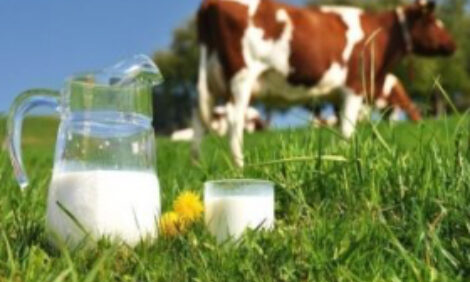



Bedding material can impact mastitis risk
Dr Sandra Godden, professor at the University of Minnesota and speaker at the international meeting for the National Mastitis Council in Milan, Italy, spoke about the importance of reducing bacteria counts in bedding and therefore reducing the risk for mastitis. A key management strategy is the selection of the bedding material used in the barn.Environmental Versus Contagious Mastitis
When mastitis is identified in a cow’s quarter(s), it is important to identify the pathogen causing the infection because different categories of pathogens require different management strategies. The main bacteria responsible for causing mastitis can be divided into two categories: contagious and environmental. The difference between environmental mastitis and contagious mastitis is the source of the bacteria that is infecting the cows.
With environmental mastitis, the source of the bacteria is coming from the environment. Contagious mastitis, on the other hand, are pathogens typically clustered in the udder of another cow. It is transmitted cow-to-cow as compared to out of the environment.
Role Bedding Plays in Environmental Mastitis
The cow spends at least 75 to 80 percent of her day out in the barn, and hopefully at least 12 to 14 hours lying down on comfortable bedding, said Dr Godden.
"While she's lying down, her teat is in direct contact with whatever bedding material she's lying on. If that bedding happens to be contaminated with high levels of bacteria, specifically environmental bacteria that can cause mastitis infections, then she is at increased risk of getting bacteria up into the gland and causing mastitis," said Dr Godden.
In a presentation to conference attendees, Dr Godden spoke about the importance of bedding management to try to reduce bacteria counts in bedding and therefore reduce the risk for an intramammary infection in the cow. A key management strategy is in the selection of the bedding material used in the barn.
"The gold standard, we would all agree, is clean, never-been-used sand. It's inorganic, so it doesn't have a lot of organic matter in it that would support bacterial growth. It's dry, and we know that the bacteria counts in new sand, never-been-used-before sand, are the lowest," she explained. "Studies consistently show that udder health is best in herds that are using new sand. So that would be our gold standard for bedding. But people can't always use new sand - maybe it's not available, or it's too expensive, or perhaps their manure handling system won't handle that material very well. So people look at other bedding materials like other organic materials, like shavings or straw, which have commonly been used in the past."
Reclaimed sand - a system using recycled sand. Producers wash it, dry it and reuse it. Designed to save money from continuously buying sand.
Recycled manure solids - remove manure solids from alleyways and put it through a press to squeeze out as much water as possible to create a dry, fluffy material. Very comfortable and reusable bedding material. However, it's manure, so it contains a lot of organic material, which will support significant bacterial growth.
"New sand is best, but if you choose one of these other types of materials, the bacteria counts can be higher. People who use reclaimed manure solids as their bedding material do have more challenges in controlling udder health and preventing environmental mastitis in their herds," she said.
Whatever material is chosen to reduce your risk of environmental mastitis, Dr Godden recommends keeping the bedding as dry as possible.
"If you're using sand, especially reclaimed sand, it's important to wash it and clean it well before you reuse it, to try to remove as much of the organic matter as possible," she noted. "Those are the rules of thumb - low organic matter in sand and keep it as dry as possible for all bedding materials."
Dr Godden encouraged producers to consider their options carefully ahead of changing their bedding material type.
For information about ways to identify mastitis causing pathogens, click here or connect to the Thermo Fisher Scientific Cattle Resource Center.




